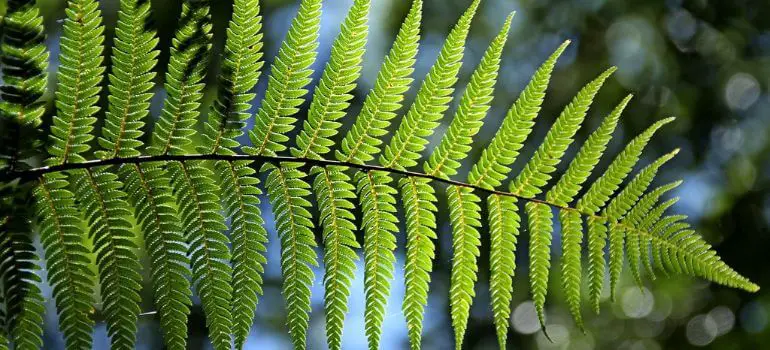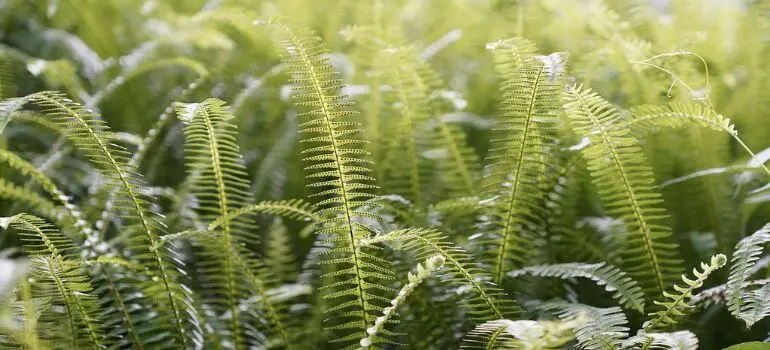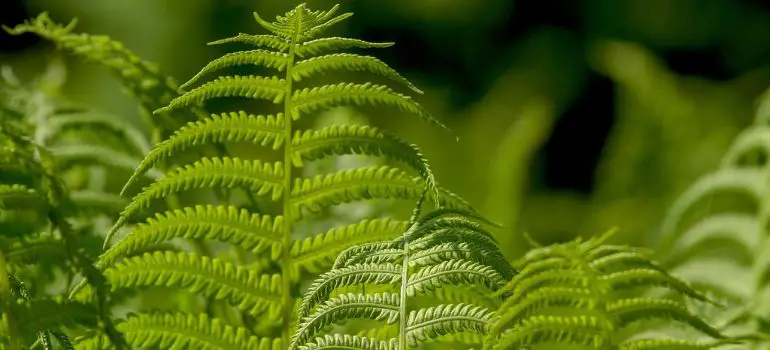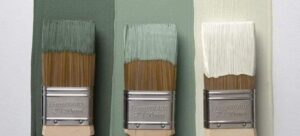Introduction to Ferns
Ferns are not just plants; they’re a piece of ancient history thriving in our modern gardens. Both Lady Fern and Ostrich Fern are popular choices for garden enthusiasts, but how do they differ? Let’s dive into the green world of these ferns.
What is Lady Fern?
Lady Fern, with its delicate fronds and light green color, is a favorite among shade gardeners. Thriving in damp, shady environments, it’s perfect for adding a touch of elegance.
What is Ostrich Fern?
In contrast, the Ostrich Fern, resembling the plumes of its namesake, offers a more robust presence. It loves moist, fertile soil and can grow quite tall, making a statement in any garden.
Visual Differences
While both have unique frond structures, Lady Fern’s are finer and more intricate compared to Ostrich Fern’s larger, feather-like appearance. Size-wise, Ostrich Fern often towers over its dainty counterpart.
Growth and Care
Lady Fern (Athyrium filix-femina):

- Growth Conditions:
- Light: Prefers partial to full shade. Can tolerate more sunlight than Ostrich Fern, but the fronds may become scorched in too much direct sun.
- Soil: Thrives in rich, moist, well-drained soil. It prefers a slightly acidic to neutral pH.
- Climate: Does well in temperate climates and is hardy in USDA zones 4 through 8.
- Care Tips:
- Watering: Regular watering is essential, especially during dry periods, to keep the soil consistently moist.
- Fertilizing: Light fertilization can be beneficial in spring. Use a balanced, slow-release fertilizer.
- Mulching: Apply organic mulch to help retain soil moisture and regulate temperature.
Ostrich Fern (Matteuccia struthiopteris):
- Growth Conditions:
- Light: Prefers shade to partial shade. Too much sun can lead to wilted fronds.
- Soil: Adaptable to various soil types but grows best in rich, moist, well-drained soil. It can tolerate heavier soils like clay more than Lady Fern.
- Climate: Hardy in a slightly broader range, USDA zones 3 through 7.
- Care Tips:
- Watering: Needs consistent moisture but is somewhat more tolerant of temporary dry conditions than Lady Fern.
- Fertilizing: Generally requires less fertilization. If needed, apply a balanced fertilizer in early spring.
- Spacing: Give ample space as Ostrich Fern can grow quite large and spread through underground rhizomes.
For both ferns, it’s important to avoid waterlogged conditions, as this can lead to root rot. Also, providing protection from strong winds will help prevent damage to their delicate fronds. Regularly removing dead or yellowing fronds will encourage healthier growth and improve the overall appearance of the plants.
By adhering to these growth and care guidelines, both Lady Fern and Ostrich Fern can become lush, vibrant components of a garden, each bringing its unique texture and form to the landscape.
Durability and Maintenance
Lady Fern (Athyrium filix-femina):
- Durability: Lady Ferns are relatively hardy in their preferred environments. They are best suited to temperate climates and can survive in USDA zones 4 through 8. While they are resilient to pests, they can be susceptible to environmental stresses like extreme drought or excessive sunlight.
- Maintenance: These ferns require regular maintenance to keep them looking their best. This includes:
- Watering: They need consistent moisture, especially in dry periods, but do not tolerate waterlogged soil well.
- Pruning: Dead or damaged fronds should be trimmed regularly to encourage healthy growth and maintain a neat appearance.
- Soil Condition: Lady Ferns prefer slightly acidic, well-drained soil. Mulching can help maintain soil moisture and temperature.
Ostrich Fern (Matteuccia struthiopteris):

- Durability: Ostrich Ferns are known for their robustness and can thrive in a wider range of conditions than Lady Ferns. They are suitable for USDA zones 3 through 7, showing a higher tolerance for cold temperatures.
- Maintenance: These ferns are more low-maintenance compared to Lady Ferns. Their care involves:
- Watering: While they prefer moist conditions, they are more tolerant of varying soil moisture levels, including temporary dry spells.
- Pruning: Less frequent pruning is needed. Old fronds typically die back in winter and can be cleared in early spring to make way for new growth.
- Soil Condition: They are adaptable to different soil types, including clay, but thrive best in rich, moist soil.
In both cases, it’s important to provide adequate space for these ferns to spread, as they can grow quite large and may crowd out other plants if not managed. Additionally, protecting them from strong winds and direct afternoon sun will help maintain their health and appearance.
By understanding these aspects of durability and maintenance, gardeners can ensure that both Lady Fern and Ostrich Fern continue to be attractive and healthy additions to their gardens.
Aesthetic Appeal
The Lady Fern adds a soft, feathery texture to garden beds, ideal for creating a serene and elegant ambiance. Ostrich Ferns, with their dramatic height and bold fronds, are perfect for creating focal points or natural backdrops in larger garden spaces.
Culinary Uses
Interestingly, the fiddleheads of Ostrich Fern are edible and considered a delicacy in some cuisines. Lady Ferns, however, are not commonly consumed due to their slightly bitter taste.
Environmental Impact
Both ferns play a significant role in their ecosystems. They provide habitat for wildlife and contribute to the biodiversity of their surroundings, with the Ostrich Fern often being more dominant in wild settings.
Common Misconceptions
A common myth is that all ferns are alike in care and appearance, which is far from true. Each species, like our Lady and Ostrich Ferns, has unique needs and characteristics.
Case Studies
Gardeners have successfully used both ferns in various settings, from woodland gardens to urban landscapes. Experts often recommend Lady Fern for smaller, intimate spaces, and Ostrich Fern for larger areas where its grandeur can be fully appreciated.
Purchasing Tips
When buying these ferns, look for healthy, green fronds and robust root systems. Local nurseries often provide the best options, and it’s crucial to ensure that the plants are sustainably sourced.
FAQs
Yes, Lady Fern can tolerate more sun compared to Ostrich Fern. While it thrives best in partial shade, it can withstand sunnier spots better than the Ostrich Fern, which prefers more consistent shade.
Ostrich Ferns are generally not ideal for indoor gardening due to their size and need for natural environments. Lady Ferns, on the other hand, can be grown indoors with proper care, including sufficient humidity and indirect light.
For Lady Fern, companion plants like Hostas, Astilbe, and Bleeding Heart work well. Ostrich Fern pairs nicely with woodland flowers like Trillium, Solomon’s Seal, and Wild Ginger.
Wildlife, particularly birds and small mammals, often use these ferns for shelter. The dense fronds of Ostrich Fern can provide excellent ground cover for wildlife, while Lady Fern’s softer texture offers a safe haven for smaller creatures.
Lady Fern is more suitable for container gardening due to its moderate size. Ostrich Fern can also be grown in large containers but may require more space to reach its full potential.



